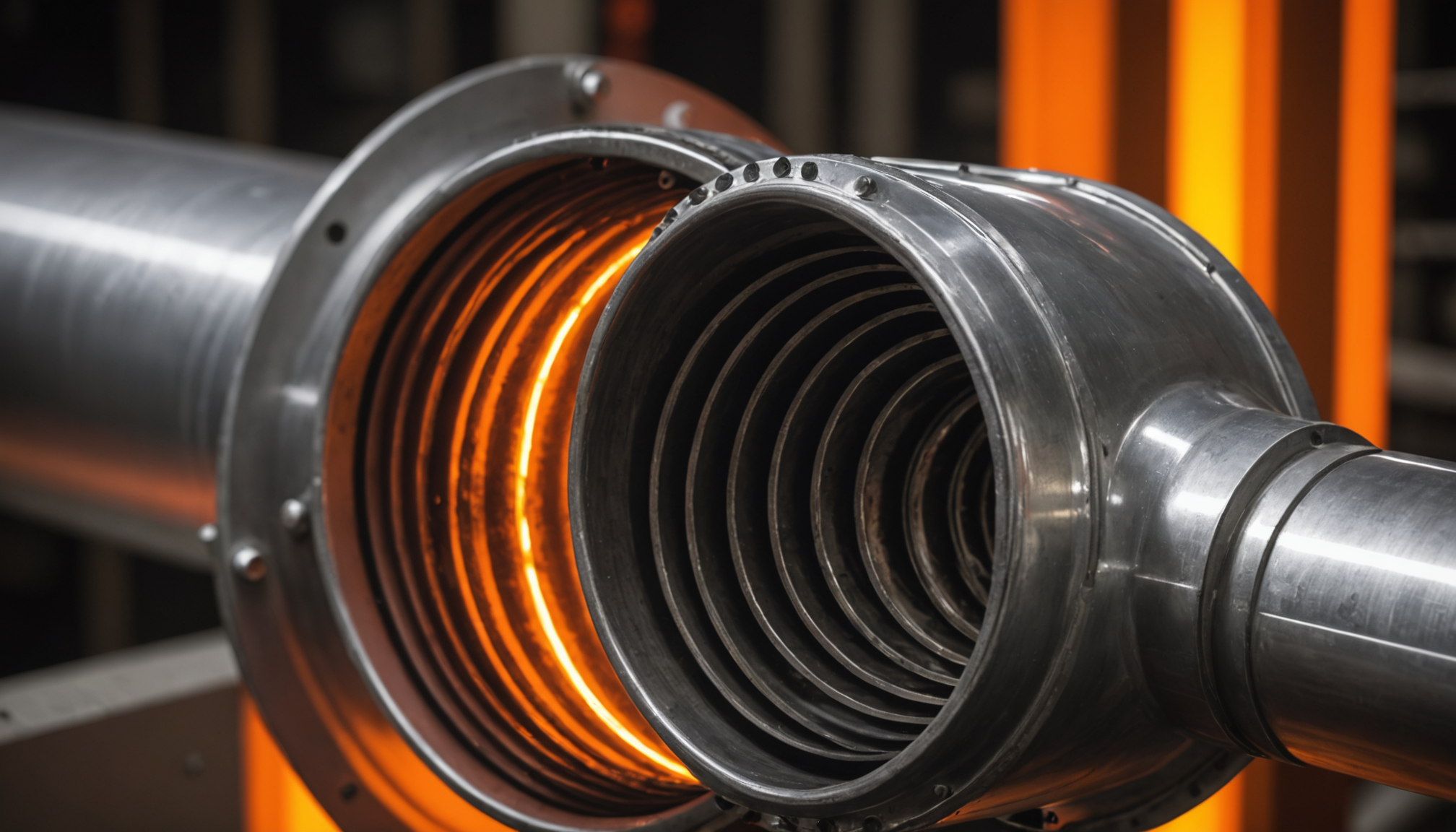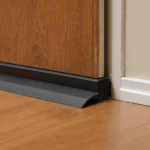Understanding your furnace system is crucial not only for ensuring efficient operation but also for safeguarding your home from potential hazards. A furnace is a central heating device commonly found in residential buildings that works by generating heat and distributing it throughout your home. There are different types of furnace systems, each with unique features and operational principles.
Furnaces typically use one of several types of energy sources, such as natural gas, electricity, oil, or propane, to generate heat. This heat is then transferred into air, water, or steam and circulated through various distribution systems. The efficiency, cost, and environmental impact of your furnace are directly influenced by the type of energy source it utilizes.
| Type of Fuel | Advantages | Disadvantages |
| Natural Gas | Cost-effective, widely available, high efficiency | Requires gas hookup, CO2 emissions |
| Electricity | No emissions at the point of use, easy installation | Higher operational costs, depends on electricity rates |
| Oil | High heat output, reliable even in remote locations | Higher maintenance, storage required, can be expensive |
| Propane | Environmentally friendly, versatile installation | Typically more expensive than natural gas |
Understanding the components within your furnace will help you better appreciate how maintenance and repairs keep it running smoothly. The main parts include the heat exchanger, blower motor, burners, flue, thermostat, and ductwork. Regular maintenance of these components can enhance efficiency and extend the lifespan of your furnace.
The heat exchanger is a fundamental part of any furnace, responsible for separating combustion gases from the air that gets circulated into your home. Ensuring the integrity of this component is essential for safety and efficiency. The blower motor, on the other hand, is designed to circulate the heated air throughout your dwelling, making sure that warmth reaches all intended areas.
Another critical mechanism is the burner, where the fuel combustion takes place. Regular cleaning and adjustment are vital to ensure proper ignition and efficient burning. Proper attention should also be given to the flue, which directs exhaust gases out of your home, maintaining a safe environment.
The thermostat acts as the control center for your furnace system, allowing you to set and maintain desired temperature levels. Ensuring your thermostat is functioning accurately can have a significant impact on energy savings and comfort.
Each of these components needs to work in harmony with the others to ensure optimal performance from your furnace system. By gaining an understanding of how these elements interact, homeowners can appreciate the importance of regular maintenance and timely interventions.
Signs your furnace needs maintenance
Keeping an eye out for warning signs can help prevent costly repairs and ensure your furnace is running efficiently. Recognizing these signs early can save you from dealing with a broken system during the coldest months. Here’s what to look for:
- Unusual Noises: Remarkable sounds like banging, squealing, or rattling coming from your furnace can indicate various issues such as loose components, a failing blower motor, or ignition problems. Immediate attention can prevent more severe damage.
- Increased Utility Bills: A sudden spike in your energy costs, especially if your usage hasn’t significantly changed, may suggest that your furnace is working harder than necessary. This inefficiency often happens when the system is overdue for maintenance.
- Inconsistent Heating: If some rooms are too hot while others remain cold, or if there are noticeable fluctuations in temperature, your furnace may not be distributing heat evenly. This could stem from issues with your ductwork or thermostat, among other possibilities.
- Frequent Cycling: A furnace that turns on and off more frequently than usual, known as short cycling, can indicate a problem with the thermostat, overheating, or improper airflow. This behavior wastes energy and wears out the furnace faster.
- Yellow Pilot Light: For furnaces with a pilot light, a healthy blue flame indicates proper combustion. A yellow or flickering flame can mean incomplete combustion or the presence of carbon monoxide, which requires immediate professional attention.
- Accumulation of Dust or Soot: Finding excessive dust around your home or soot near the furnace registers could signal that the furnace is not operating cleanly. This might be due to clogged filters or a problem with the burners.
- Reduced Air Quality: An increase in household dust, dry air, or even humidity problems could mean that your furnace is not filtering or distributing air properly. This might necessitate service or the addition of humidifiers and air purifiers.
- Foul Odors: Unpleasant smells resembling burnt dust, gas, or mold emanating from your furnace during operation might suggest an overdue servicing or more serious issues like gas leaks or electric failures.
- Visible Rust or Corrosion: Checking the furnace regularly for signs of rust or corrosion, particularly around the heat exchanger, can preempt more severe damage. Corrosion typically indicates moisture problems or significant age-related degradation.
- Age of the Furnace: Typically, furnaces have a lifespan of about 15 to 20 years. If your furnace is approaching this age, even if it seems to be running fine, it may be time to consider more frequent maintenance checks and start planning for a replacement.
By proactively addressing these signs with simple troubleshooting or professional evaluation, you can maintain furnace efficiency and ensure safety, comfort, and longevity in your home.
Key components of a furnace check-up
Regular furnace check-ups are essential to maintain the efficiency and safety of your heating system. These comprehensive evaluations focus on critical components, ensuring they are in good working order and identifying any potential issues before they become significant problems. Here’s what you can expect during a professional furnace check-up:
First and foremost, the technician will thoroughly inspect the heat exchanger, the part responsible for heating the air before distributing it throughout your home. They’ll look for any signs of cracks or corrosion, which can lead to dangerous carbon monoxide leaks. Ensuring the integrity of this component is critical for safety and efficient operation.
Next, attention will turn to the burner assembly and ignition system. The technician will clean and adjust the burners to ensure they burn fuel efficiently, which directly impacts the furnace’s effectiveness. They’ll also check the ignition system, whether it’s a pilot light or an electronic igniter, to ensure reliable and consistent operation.
An essential part of the inspection involves the blower motor and fans. These components are crucial for moving the heated air through your duct system. The technician will clean the blower and test the motor’s performance to confirm that the airflow is optimal, unclogged by dust or debris, and free from unusual wear or tear.
The condition of the flue and venting system is also assessed to guarantee that combustion gases are vented properly from your home. A blocked or damaged flue can lead to dangerous situations, including gas leaks and the buildup of harmful fumes within your living spaces.
Another critical component under scrutiny is the thermostat. The technician will calibrate and test the thermostat to ensure it communicates correctly with the furnace, accurately reflecting the desired temperature settings for efficiency and comfort.
Moreover, air filters will be checked, with replacements or cleanings provided if necessary. Clean filters are essential for maintaining good air quality in your home and preventing your furnace from overworking, which can lead to higher energy bills and premature wear.
Ductwork inspection is also part of a thorough check-up. This involves examining visible ducting for leaks that could be wasting heated air and causing your furnace to work harder than necessary. Sealing any leaks can improve efficiency and ensure even distribution of heat throughout your home.
Finally, the technician will conduct a safety inspection of all electrical and fuel connections, checking for any dangerous conditions that could lead to malfunctions or even hazards such as fires or gas leaks. This peace of mind is invaluable, particularly during colder months when your furnace is in constant use.
Each of these checks is integral to maintaining your furnace’s performance. By understanding what a furnace check-up entails, you’ll better appreciate its role in prolonging the life of your system and ensuring a warm, safe environment in your home. Regular maintenance by a qualified technician is an investment that pays off through improved efficiency, reduced utility bills, and the prevention of major breakdowns.
How to choose a qualified technician
Selecting the right technician for furnace maintenance is a crucial step in ensuring the safety, efficiency, and longevity of your heating system. With numerous options available, it’s important to know which qualifications and attributes to look for in a technician to ensure you receive top-notch service.
Firstly, prioritize certified professionals with relevant licenses. Certifications such as NATE (North American Technician Excellence) or those from reputable organizations like the HVAC Excellence or EPA ensure that the technician has undergone rigorous training and meets industry standards. A licensed technician complies with local regulations and safety standards, providing peace of mind regarding their competence.
Experience is another vital consideration. Look for technicians with a proven track record in furnace maintenance and repair. Experienced professionals are more likely to diagnose problems quickly and efficiently due to their familiarity with various types of furnaces and heating systems. Online reviews and testimonials can be valuable resources for gauging a technician’s experience and the quality of service they provide.
Another important element involves checking the company’s reputation. Reliable companies will often belong to recognized trade associations and have numerous positive customer reviews. It’s worth asking for recommendations from friends or family who have recently had maintenance done on their furnaces. Their firsthand insights can be invaluable in steering you toward trustworthy technicians.
Furthermore, inquire about insurance coverage. A qualified technician or the company they work for should have liability insurance to protect you and your property in case of accidental damage during the service. This is a safety net that reflects the professionalism and accountability of the technician.
Effective communication skills are a must-have attribute in a good technician. They should be able to explain the work being done in an understandable manner, highlighting any issues found and recommending solutions without using excessive technical jargon. Clear communication ensures you are fully aware of the state of your furnace and the necessary steps to maintain or repair it.
Additionally, compare service pricing. While it might be tempting to go with the cheapest quote, remember that extremely low prices can sometimes reflect subpar service. Request detailed estimates from multiple technicians to better understand what is included in their services and to ensure you are receiving a fair rate for high-quality work.
Lastly, assess the technician’s customer service. From the initial contact, be it via phone or in-person consultation, gauge their punctuality, professionalism, and willingness to answer your questions. A technician who values customer satisfaction will likely provide a more thorough and dedicated service.
Selecting the right technician for your furnace maintenance involves a thoughtful assessment of their credentials, experience, reputation, and customer service approach. By taking these factors into account, you can ensure that your furnace is in capable hands, allowing you to remain warm and worry-free during the colder months.
Tips for maintaining your furnace year-round
To ensure your furnace operates efficiently and reliably, there are several proactive steps you can take throughout the year. Firstly, consistency in changing air filters is paramount. During peak usage months, filters should be checked monthly and replaced as needed. A clogged filter can reduce air quality and increase energy bills as the system works harder to push through air.
Another simple yet effective measure is to regularly inspect and clean vents and ducts. Over time, dust and debris can accumulate, obstructing airflow and reducing efficiency. By keeping these clean, you ensure that warm air circulates freely, reaching every corner of your home effectively.
It’s also beneficial to routinely check your thermostat settings. Programmable thermostats can offer significant energy savings by optimizing heating schedules according to your routine. Ensure your thermostat is placed in an optimal location—away from direct sunlight or drafts—to accurately reflect the home’s temperature.
Throughout the year, especially before the heating season begins, it’s advisable to perform a visual inspection of the furnace’s components. Look for any visible rust, wear, or unusual debris on the unit, and ensure that the area around the furnace remains clutter-free. This vigilance can help spot potential issues before they escalate into costly repairs.
Additionally, lubricating moving parts of your furnace system annually enhances its efficiency and minimizes wear. This is particularly important for the blower motor and fans. A bit of maintenance can prevent friction-related inefficiencies and prolong the components’ lifespan.
To prevent unexpected breakdowns during winter, run your heating system briefly once in the off-season months. This practice helps identify any underlying issues early and keeps the system in operational condition throughout the year.
Lastly, schedule professional maintenance at least once a year. A trained technician can conduct a thorough inspection, addressing any hidden issues and fine-tuning the system for optimal performance. This preventive measure is key to maintaining safety and avoiding more extensive future repairs.
By adopting these practices, you ensure that your furnace remains in peak condition, providing consistent and efficient heating whenever you need it.
In conclusion, regular maintenance and timely attention to your furnace’s needs can significantly extend its life and enhance its performance. By understanding your system, recognizing signs of wear, conducting routine check-ups, and choosing the right professionals, you create a safe, warm, and energy-efficient environment in your home year-round.


